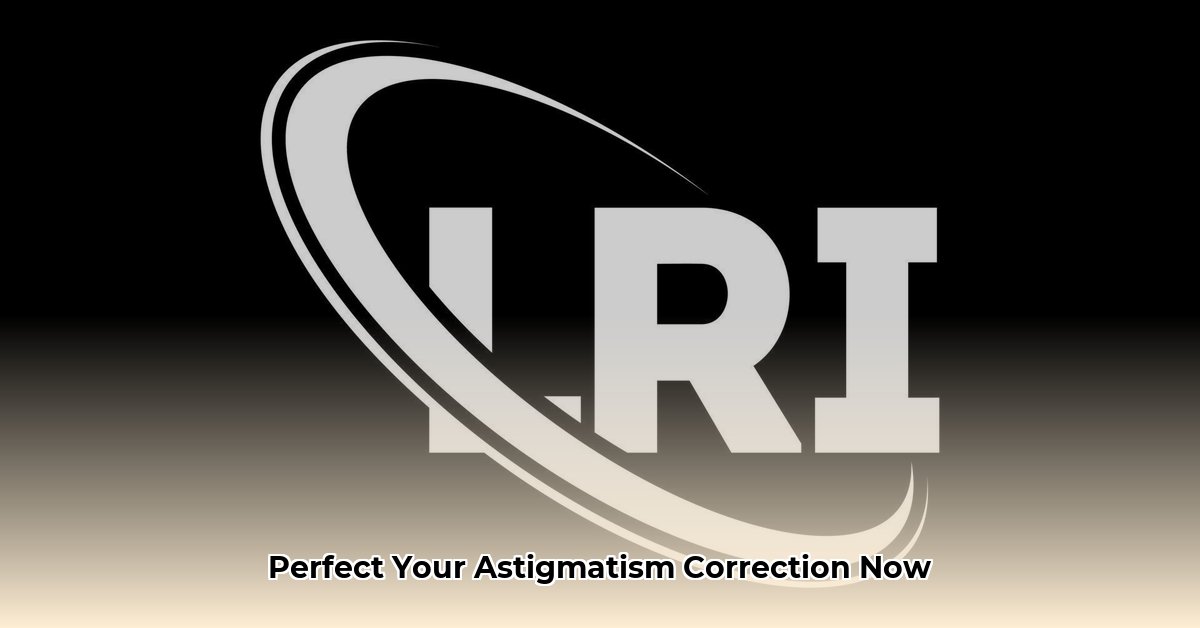Astigmatism, a common refractive error stemming from an irregularly shaped cornea, can significantly impact visual acuity. While toric intraocular lenses (IOLs) are often employed for higher levels of astigmatism, limbal relaxing incisions (LRIs) offer a precise and effective alternative for milder cases, particularly when performed with femtosecond laser technology. This guide explores the Wörtz-Gupta formula and its associated online calculator (LRICalc.com), providing ophthalmologists with a step-by-step approach to optimizing astigmatism correction during cataract surgery.
Understanding LRIs and the Wörtz-Gupta Formula
Astigmatism, often analogized to viewing through a warped window, results in blurred or distorted vision due to the cornea’s non-spherical shape. LRIs, meticulously placed incisions at the corneal limbus, offer a means of reshaping the cornea and mitigating astigmatism, especially during cataract procedures.
The Wörtz-Gupta formula provides the mathematical framework for precise LRI planning. This formula considers several key factors, including patient age (due to age-related changes in corneal elasticity), astigmatism magnitude, steep axis (the orientation of the steepest corneal meridian), and surgically induced astigmatism (SIA). By incorporating these variables, the formula outputs the optimal incision length and placement necessary for effective astigmatism correction. This personalized approach ensures that the procedure is tailored to each patient’s unique corneal characteristics.
A Practical Guide to Using the LRI Calculator
Using the LRI calculator is straightforward, involving a few key steps:
-
Input Patient Data: Enter the patient’s age, astigmatism magnitude, and steep axis. Accurate data entry is paramount for reliable results.
-
Account for SIA: If the cataract surgery is anticipated to induce astigmatism, input the estimated SIA value. This allows the calculator to compensate for iatrogenic astigmatism.
-
Calculate: Click “Calculate” to initiate the Wörtz-Gupta formula.
-
Interpret Results: The calculator will display the recommended incision length and placement, often visually represented on a corneal diagram for enhanced clarity. This output guides the surgeon in performing precise LRIs.
(Include illustrative screenshots of LRICalc.com for each step)
Illustrative Case Examples
Consider a patient presenting with 1.0 diopter (D) of astigmatism at a 90-degree axis. The LRI calculator, utilizing the Wörtz-Gupta formula, might recommend a 3mm incision at the 90-degree meridian. Alternatively, a patient with 0.75D of astigmatism at a 180-degree axis would necessitate different incision parameters. These examples highlight the individualized nature of LRI planning.
(Include corneal diagrams depicting planned incision locations for each case)
Weighing the Benefits and Limitations of LRIs
Advantages
- Enhanced Precision: The Wörtz-Gupta formula and LRI calculator facilitate precise incision planning, optimizing astigmatism correction.
- Improved Predictability: The standardized, data-driven approach enhances the predictability of surgical outcomes, potentially leading to increased patient satisfaction.
Limitations
- Suitability for Mild Astigmatism: LRIs are generally most effective for astigmatism ≤1.25D. Toric IOLs are often preferred for higher magnitudes.
- Clinical Judgment Remains Essential: The calculator serves as an adjunct tool; it does not replace the surgeon’s clinical judgment and expertise. Individual patient factors must always be considered.
LRIs vs. Toric IOLs: A Critical Comparison
The primary determinant in choosing between LRIs and toric IOLs is the magnitude of astigmatism. While LRIs are often favored for mild astigmatism (typically <1.25D) due to their less invasive nature and potential cost-effectiveness, toric IOLs generally provide a more robust and predictable correction for higher levels of astigmatism. The surgeon’s experience and patient preferences also contribute to the decision-making process.
The Evolving Landscape of LRI Technology
Building upon the foundational Wörtz-Gupta study (Wörtz, F. W., & Gupta, A. (2008). Limbal relaxing incisions: nomogram and biomechanical model. Journal of Cataract & Refractive Surgery, 34(10), 1632-1638.), ongoing research continues to refine LRI techniques. The integration of LRI calculators with other surgical planning platforms is a promising avenue for further enhancing precision and streamlining the surgical workflow. While future advancements remain to be seen, these developments suggest a trend toward increasingly personalized and predictable astigmatism management.
Quick Reference Table
| Input Parameter | Output Measurement | Clinical Considerations |
|---|---|---|
| Patient Age | N/A | Accounts for age-related corneal changes |
| Astigmatism Magnitude | Incision Length | Ideally <1.25D for LRI suitability |
| Steep Axis | Incision Placement | Precise alignment is critical |
| Surgically Induced Astigmatism (SIA) | Incision Adjustment | Compensates for iatrogenic astigmatism |
Disclaimer
The Wörtz-Gupta formula and the LRI calculator are adjunctive tools designed to aid ophthalmologists in surgical planning. They are not substitutes for sound clinical judgment, and their use should be accompanied by appropriate training and experience. (Include specific legal disclaimers pertaining to the software license agreement.)
- Why an App Appeared on My Phone Unexpectedly - November 22, 2025
- How to Stop Unwanted Apps from Automatically Downloading on Android - November 21, 2025
- Why Are Android Games Installing Themselves on Your Phone? - November 20, 2025










